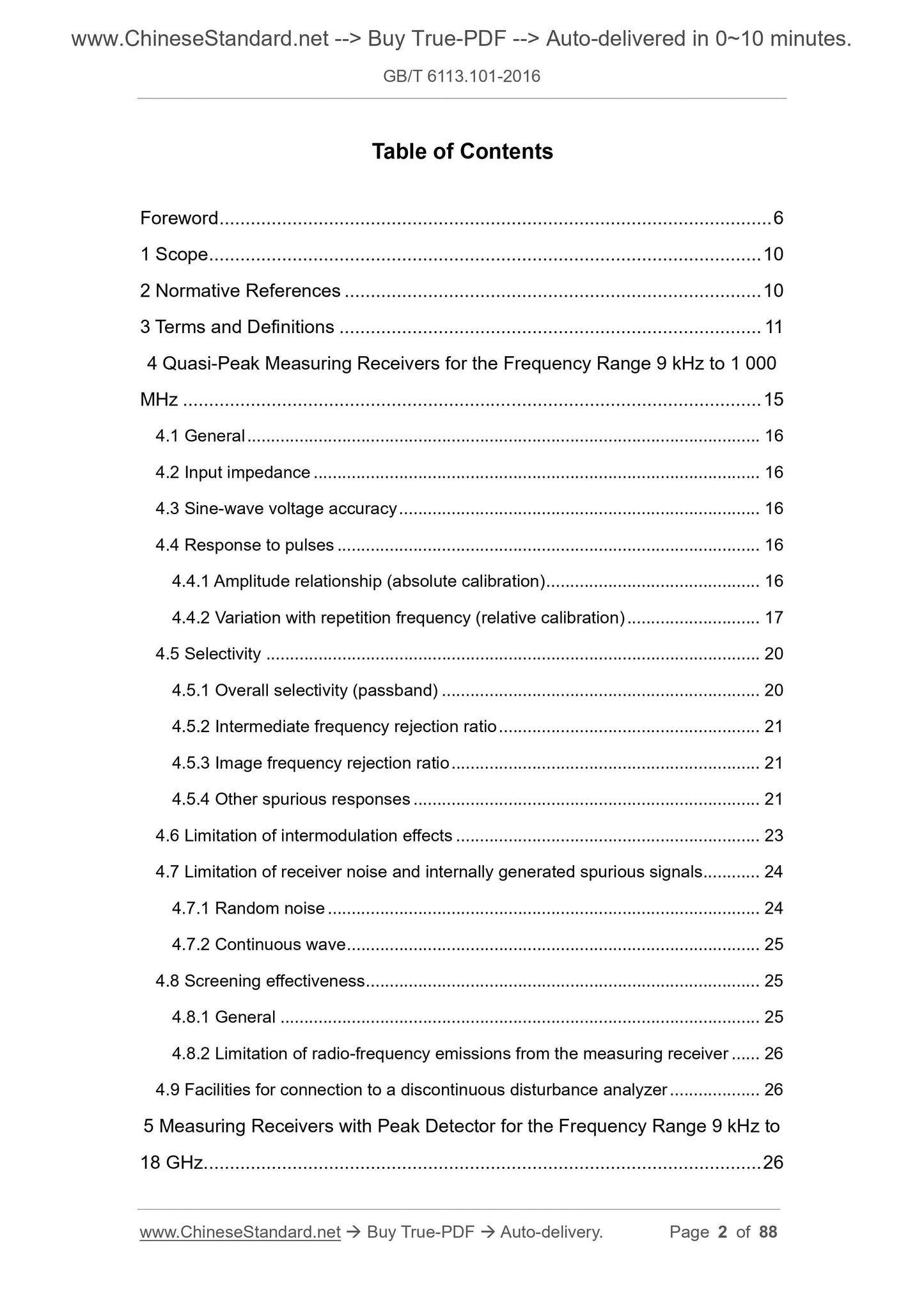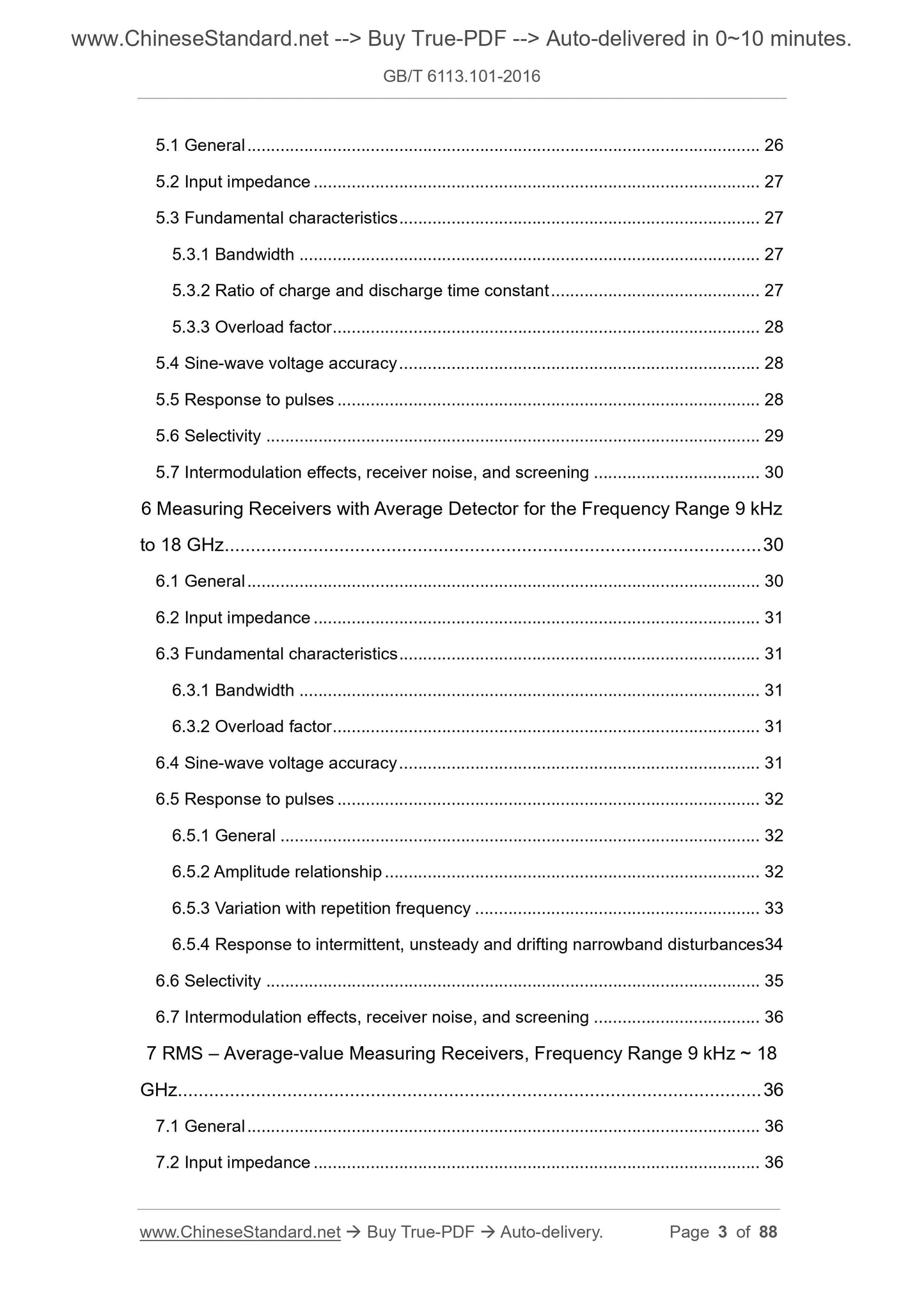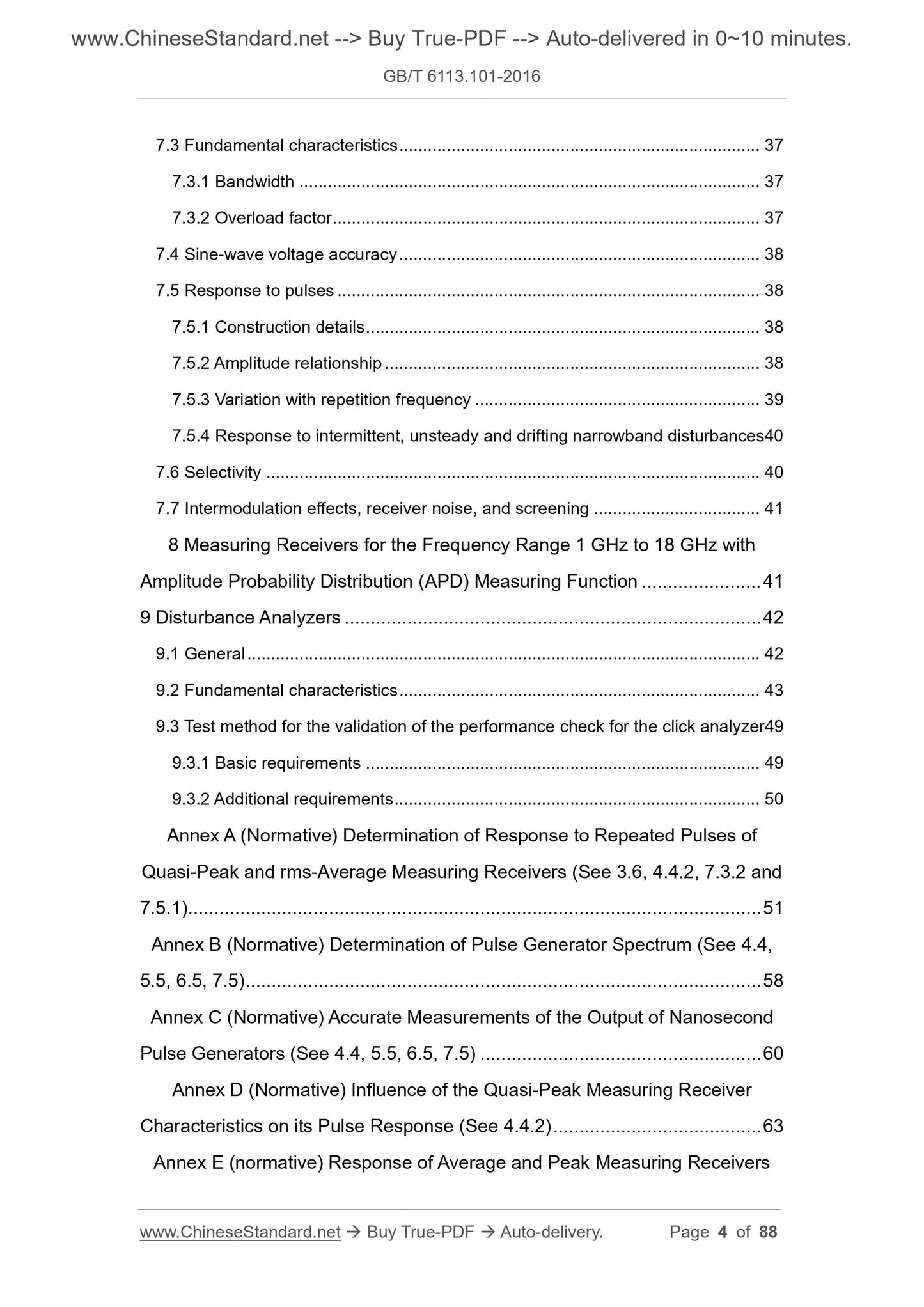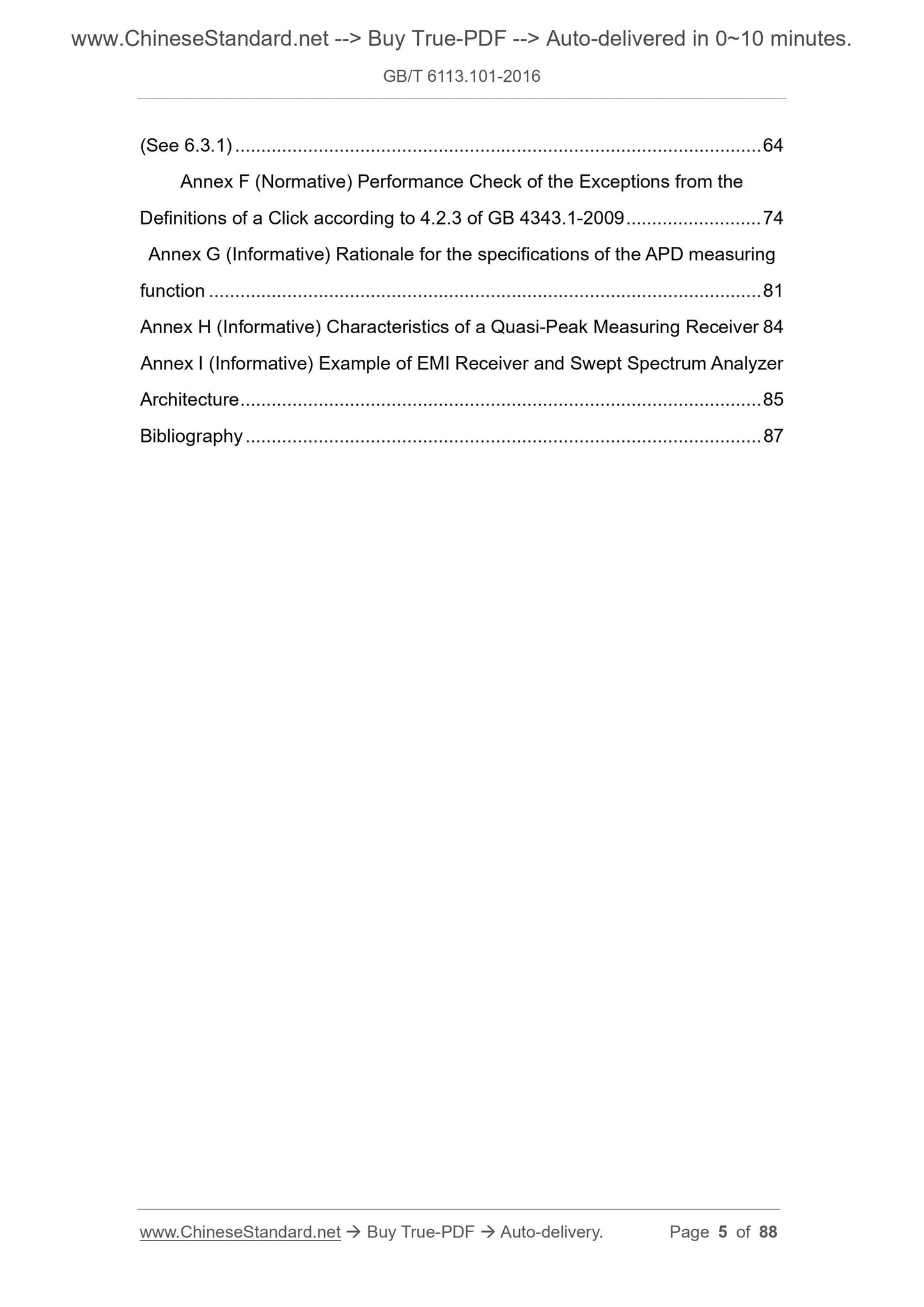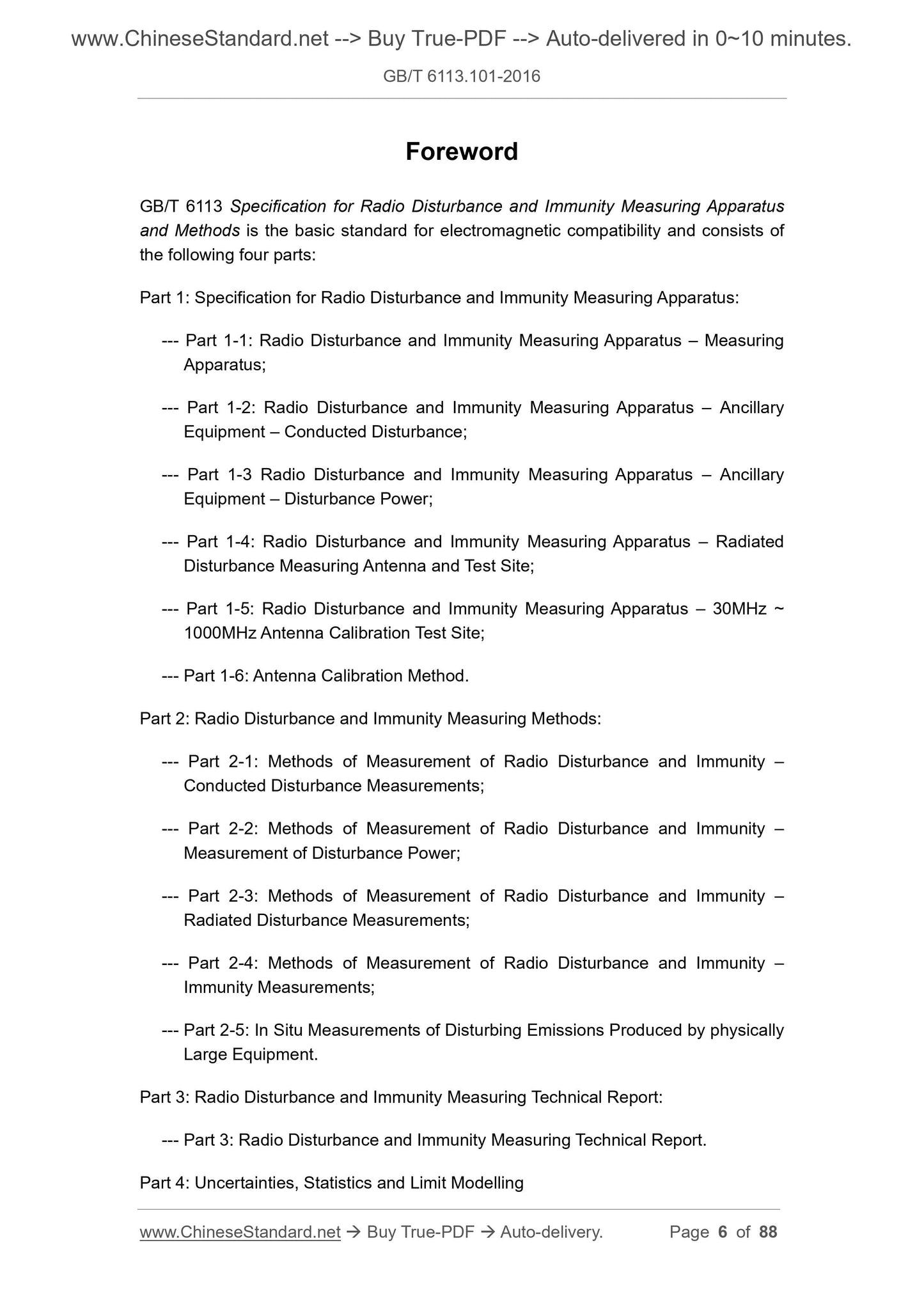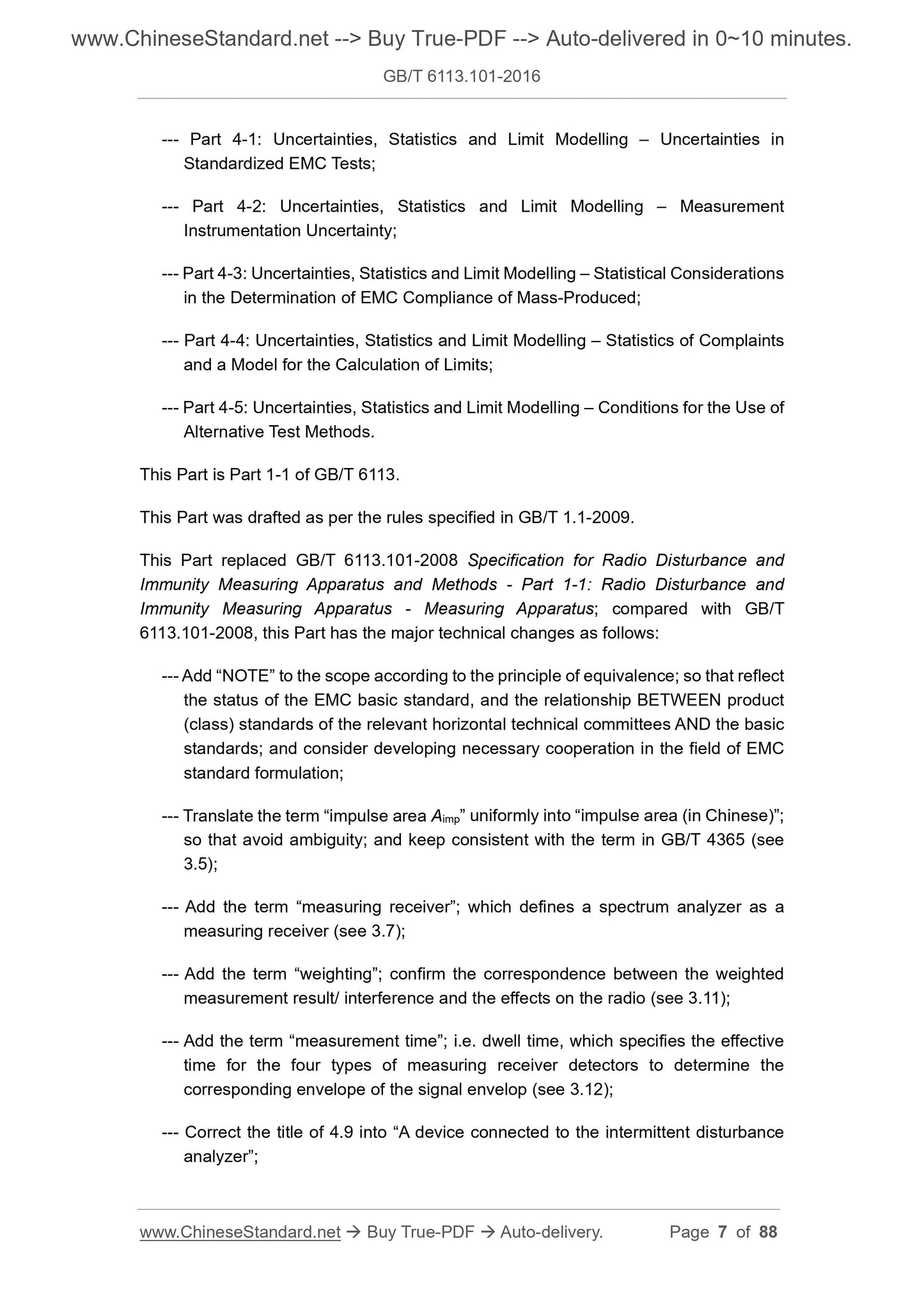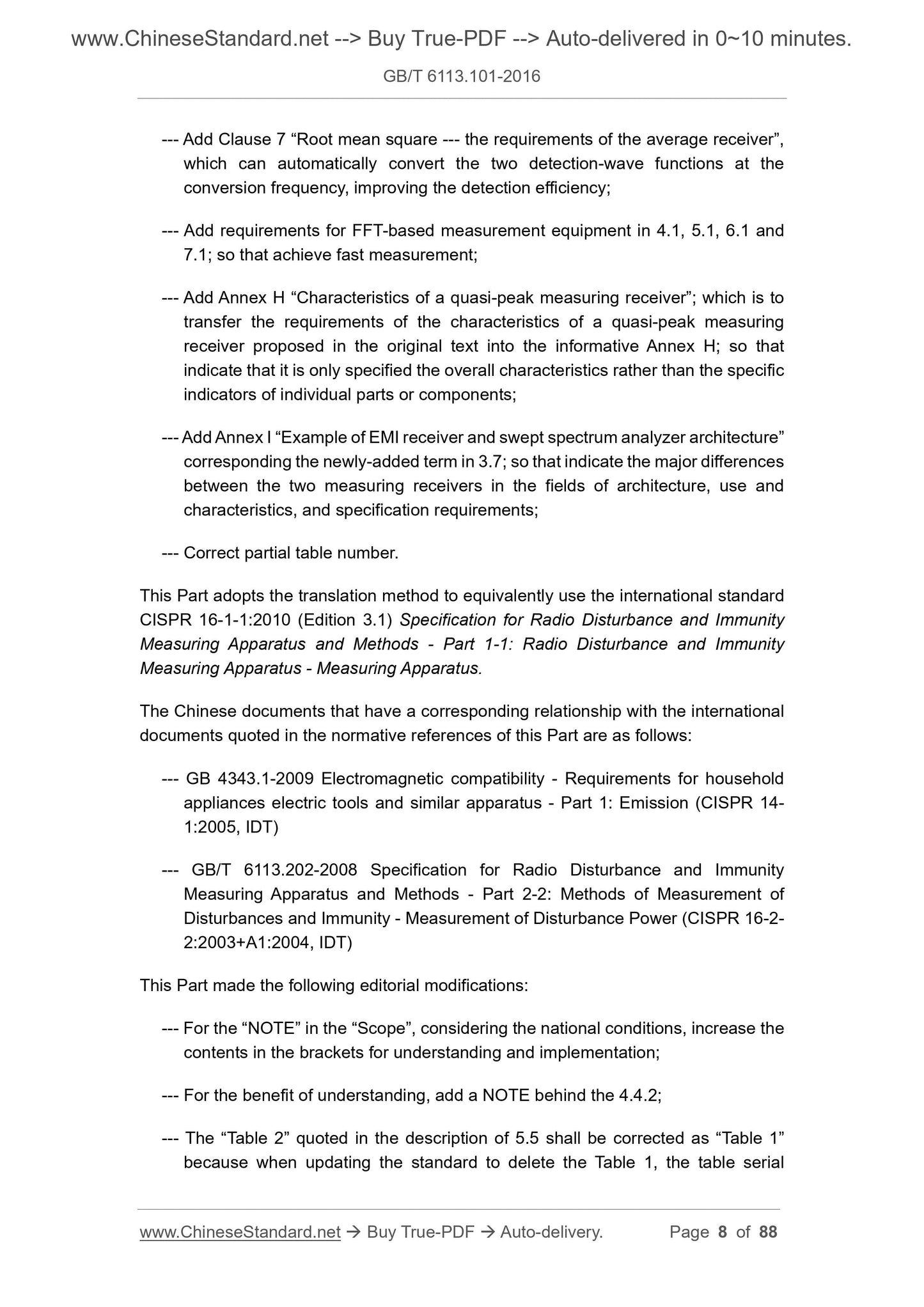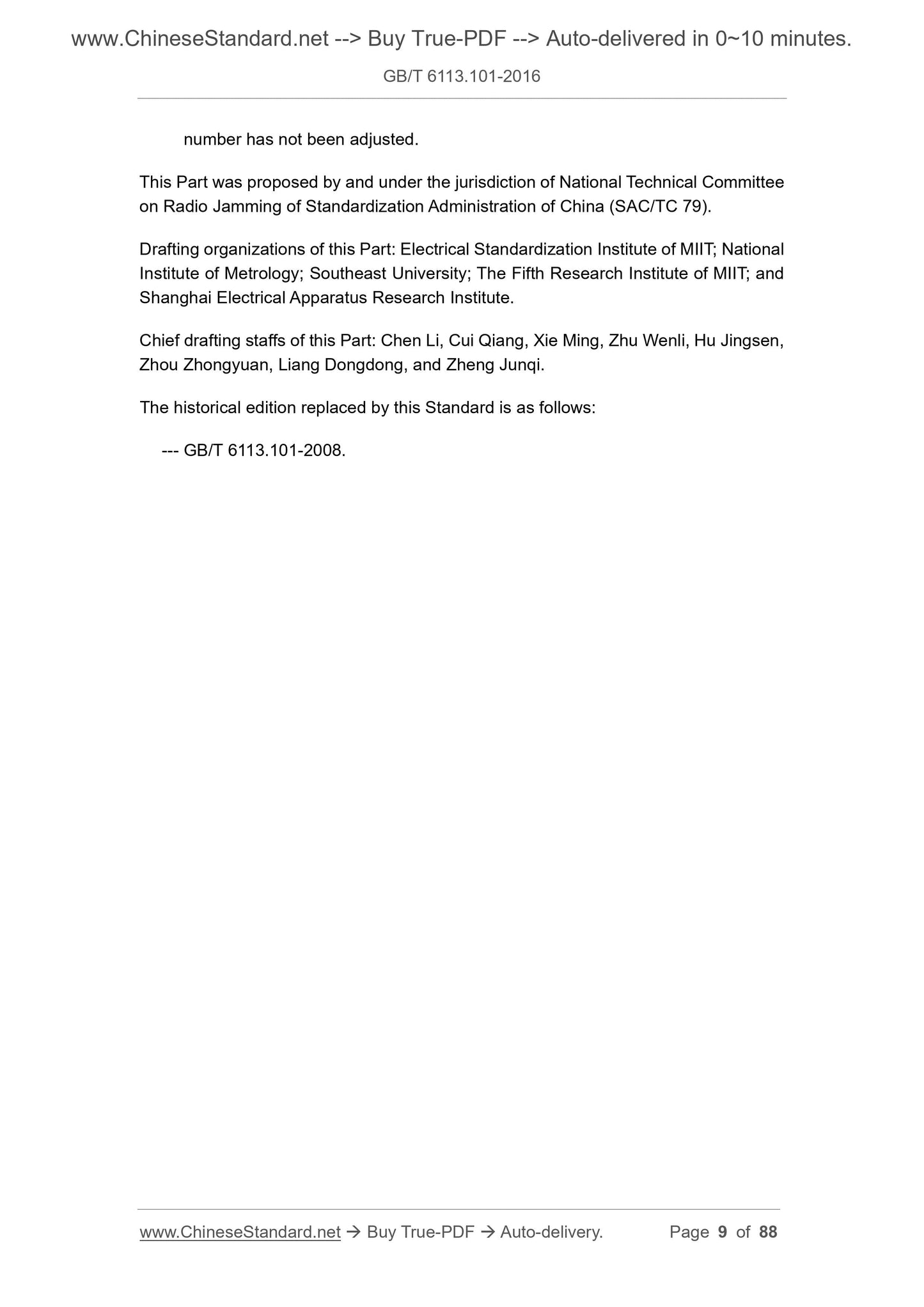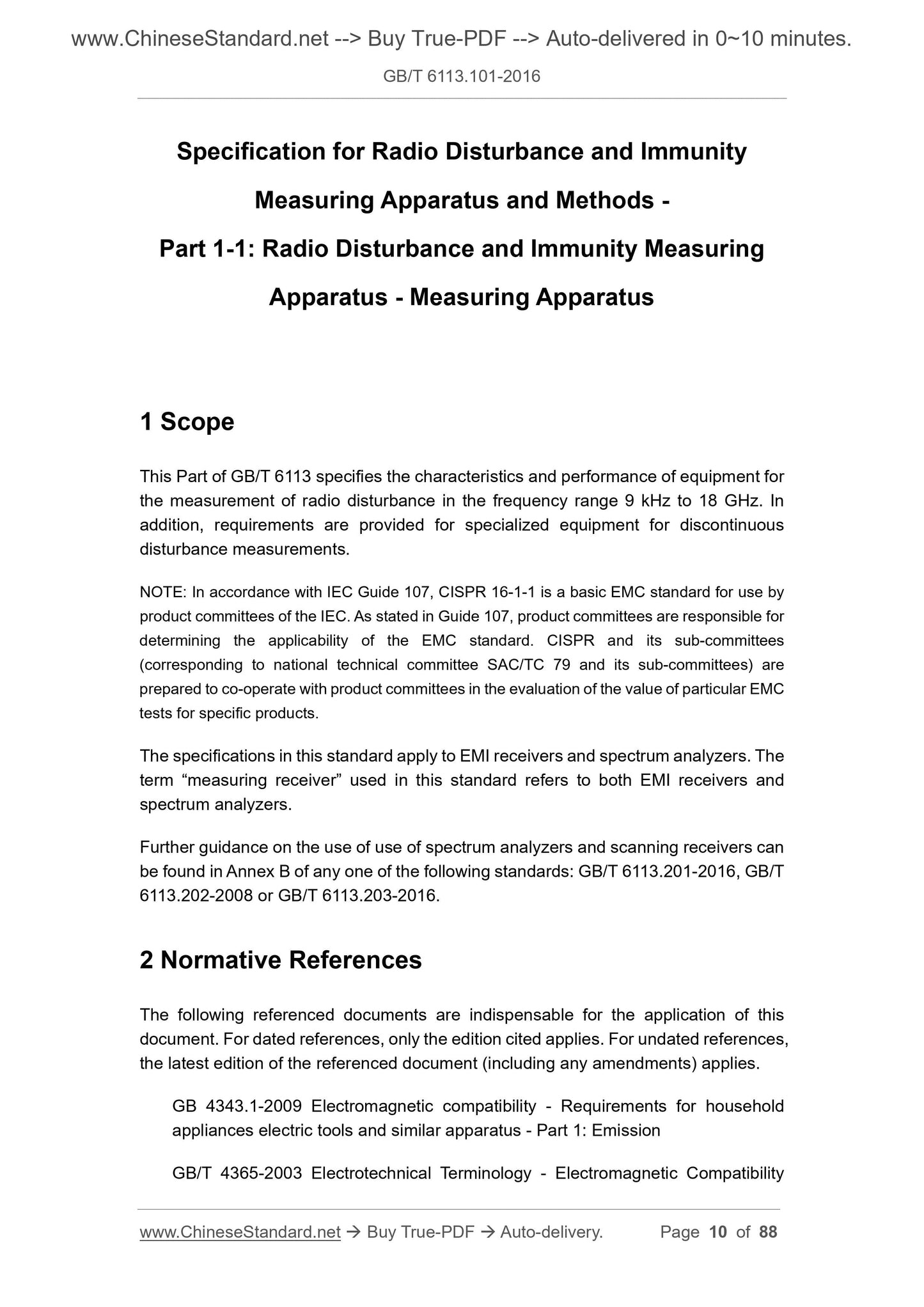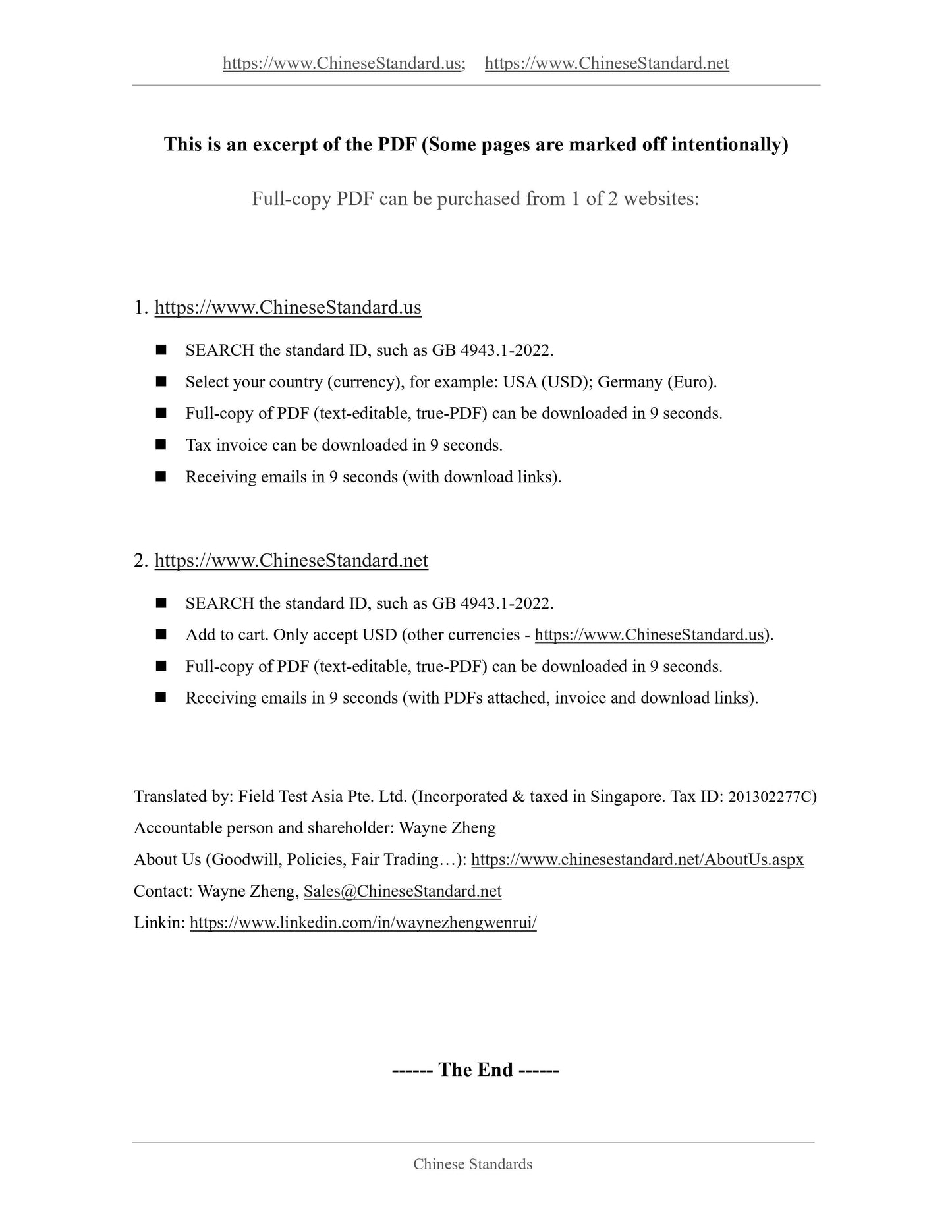1
/
of
10
www.ChineseStandard.us -- Field Test Asia Pte. Ltd.
GB/T 6113.101-2016 English PDF (GB/T6113.101-2016)
GB/T 6113.101-2016 English PDF (GB/T6113.101-2016)
Regular price
$370.00
Regular price
Sale price
$370.00
Unit price
/
per
Shipping calculated at checkout.
Couldn't load pickup availability
GB/T 6113.101-2016: Specification for radio disturbance and immunity measuring apparatus and methods -- Part 1-1: Radio disturbance and immunity measuring apparatus -- Measuring apparatus
Delivery: 9 seconds. Download (and Email) true-PDF + Invoice.Get Quotation: Click GB/T 6113.101-2016 (Self-service in 1-minute)
Newer / historical versions: GB/T 6113.101-2016
Preview True-PDF
Scope
This part of GB/T 6113 specifies the performance and characteristic requirements of measuring equipment for measuring radio disturbances. It is suitable for 9 kHz~The frequency range of 18 GHz. This section also sets forth requirements for specialized equipment for intermittent disturbance measurements.
Note. According to the IEC 107 guidelines, CISPR16-1-1 is the basic EMC standard used by the IEC product committee. As stated in the IEC 107 guidelines, products
The committee is responsible for determining the applicability of the EMC standard. CISPR and its subcommittees (corresponding to the domestic SAC/TC79 technical committee and
Its subcommittees work with these product committees to evaluate the value of specific trials for their specific products. The above product committee corresponds to the country
Internal related product technical committee.
The requirements in this section apply to electromagnetic interference (EMI) receivers and spectrum analyzers. “Measurement receiver” in this section refers to EMI
Receiver and spectrum analyzer are two types of receivers.
For detailed usage guidelines for spectrum analyzers and sweep receivers, see standard GB/T 6113.201-2016, GB/T 6113.202-
Appendix B in.2008 or GB/T 6113.203-2016.
Basic Data
| Standard ID | GB/T 6113.101-2016 (GB/T6113.101-2016) |
| Description (Translated English) | Specification for radio disturbance and immunity measuring apparatus and methods -- Part 1-1: Radio disturbance and immunity measuring apparatus -- Measuring apparatus |
| Sector / Industry | National Standard (Recommended) |
| Classification of Chinese Standard | L06 |
| Classification of International Standard | 33.100 |
| Word Count Estimation | 69,626 |
| Date of Issue | 2016-04-25 |
| Date of Implementation | 2016-11-01 |
| Older Standard (superseded by this standard) | GB/T 6113.101-2008 |
| Quoted Standard | GB 4343.1-2009; GB/T 4365-2003; GB 4824-2013; GB/T 6113.201-2016; GB/T 6113.202-2008; GB/T 6113.203-2016; CISPR 14-1-2005+A1-2008; CISPR 16-2-2-2003+A1-2004+A2-2005; CISPR/TR 16-3-2003+A1-2005+A2-2006 |
| Adopted Standard | CISPR 16-1-1-2010, IDT |
| Regulation (derived from) | National Standard Announcement No |
| Issuing agency(ies) | General Administration of Quality Supervision, Inspection and Quarantine of the People's Republic of China, Standardization Administration of the People's Republic of China |
| Summary | This standard specifies the performance and characteristics of measuring equipment for measuring radio disturbance, and is suitable for frequency ranges from 9 kHz to 18 GHz. This standard also requires intermittent disturbing measurement of special equipment. The requirements of this standard apply to electromagnetic interference (EMI) receivers and spectrum analyzers. The "measurement receiver" in this standard refers to both the EMI receiver and the spectrum analyzer. For a detailed description of spectrum analyzers and swept receivers, refer to Appendix B in the standard GB/T 6113.201-2016, GB/T 6113.202-2008 or GB/T 6113.203-2016. |
Share
